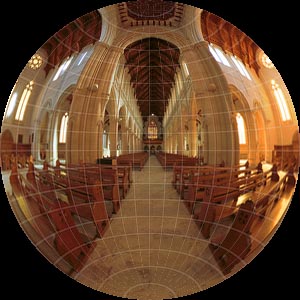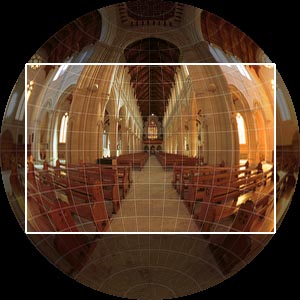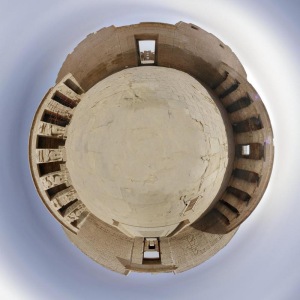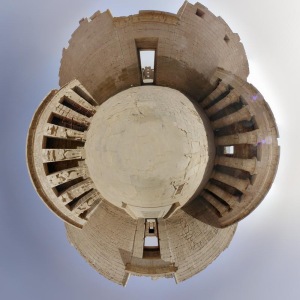Difference between revisions of "Fisheye Projection"
m (1 revision(s)) |
m (14 revision(s)) |
(No difference)
| |
Revision as of 22:24, 13 July 2006
This is a class of projections for mapping a portion of the surface of a sphere to a flat image, typically a camera's film or detector plane. In a fisheye projection the distance from the centre of the image to a point is close to proportional to the true angle of separation.
Commonly there are two types of fisheye distinguished: circular fisheyes and fullframe fisheyes. However, both follow the same projection geometrics. The only difference is one of field of view: for a circular fisheye the circular image fits (more or less) completely in the frame, leaving blank areas in the corner. For the full frame variety, the image is over-filled by the circular fisheye image, leaving no blank space on the film or detector. A circular fisheye can be made full frame if you use it with a smaller sensor/film size (and vice versa), or by zooming a fisheye adaptor on a zoom lens.
There is no single fisheye projection, but instead there are a class of projection transformation all referred to as fisheye by various lens manufacturers, with names like equisolid angle projection, or equidistance fisheye. Less common are traditional spherical projections which map to circular images, such as the orthographic (lenses commonly designated OP) or stereographic projections. Luckily, most of these related projections can be dealt with in a simple way. The following explanation is taken from a posting by Helmut Dersch (link to original see below):
theta is the angle between a point in the real world and the optical axis, which goes from the center of the image through the center of the lens.
The focal length f of common fisheye lenses corresponds quite simple to theta and the radial position R of a point on the image on the film or sensor:
R = 2 * f * sin( theta/2 )
So for 90 degrees, which would be the maximum theta of a lens with 180 degree Field of View, f=8mm, you get R = 11.3mm, which is the radius of the image circle.
This projection model applies to the Nikon 8mm and the Sigma 8mm (which actually has f=7.8mm). This is also what you get when you look into a convex mirror.
Some older Nikon lenses (e.g. the 7.5mm) try to approach a linear mapping (theta in rad)
R = f * theta
and succeed more or less.
For most practical applictions, you won't see a big difference between the two.
Btw, a rectilinear lens has a mapping
R = f * tan( theta )
We can assume that most newer fisheyes follow the first mapping scheme.
Complete text of the mail can be found at W.J. Markerink's page about fisheye analysis
More information on fisheyes and their distortions in this PDF from coastal optics



